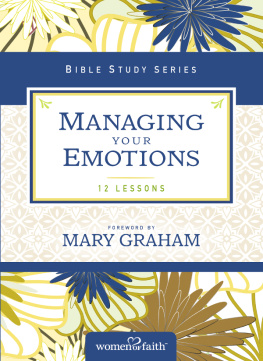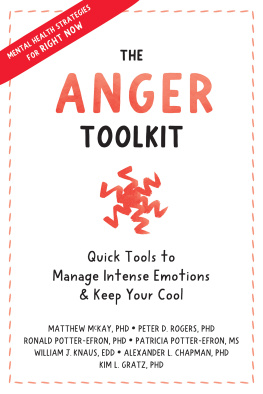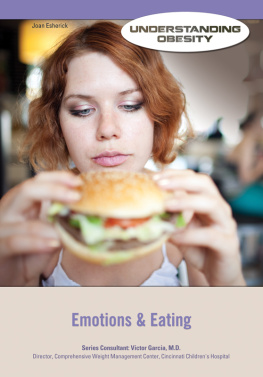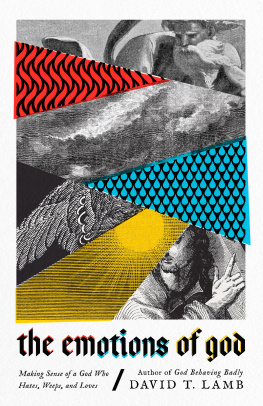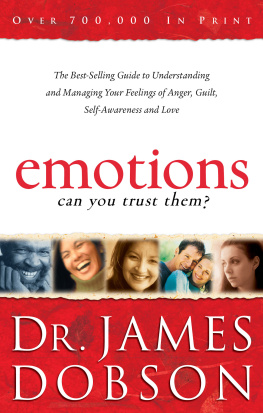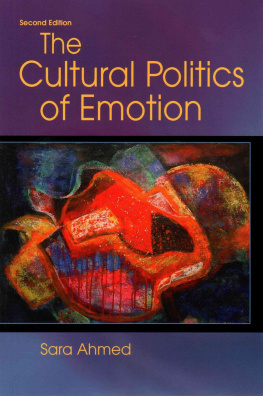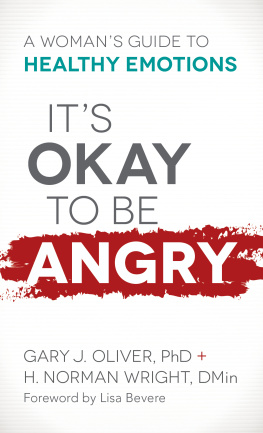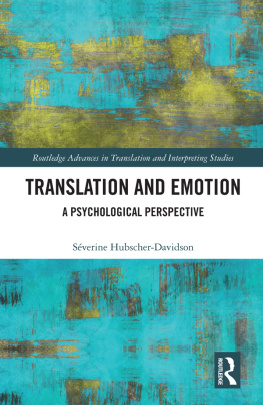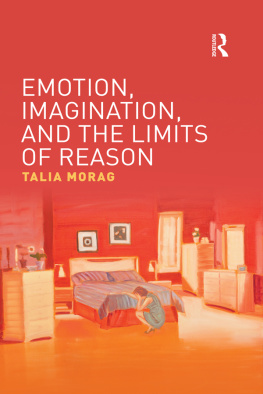Contents
Guide

BETWEEN
US
............
HOW
CULTURES
CREATE
EMOTIONS
............
BATJA MESQUITA

CONTENTS
I became a psychologist because I was intrigued by what people felt. I wanted to understand their inner lives, what made them tick. Though it is hard to reconstruct my interest in emotions, it may have had something to do with my background. I am from a Dutch Jewish family and my parents survived the Holocaust in hiding. I was a psychologically minded child, always trying to figure out how my parents felt. Many of my parents emotions were not rooted in the circumstances that I saw right in front of my eyes, but rather in events long (or perhaps not so long) past. Desperation was around the corner, and lurking under the surface was the hurt of rejection and discrimination. A small defiance on my side could meet with my parents hurt feelings or desolation; my adolescent rebellion against the culture and religion was taken by my dad as disrespect, or worse, lack of love.
My coming to the topic of emotions was my sense that people keep deep inside themselves these emotions that can erupt. It was easy for me to see emotions as a property of the individual, because many of the ones I observed were stronger than warranted by the current situations or relationships. It was my childhood aspiration to become a psychiatrist or a clinical psychologist who could help individuals whose emotions made them suffer. And I imagined that I could change these emotions by changing the person from the inside.
My view of emotions as part of our deep inner lives was helped by a broader cultural focus on feelings. In Western, Educated, Industrialized, Rich, and Democratic (WEIRD) cultures, the 1960s and 70s were the time of emancipation of feelings. Authenticity and freedom of choice reigned supreme, and so it was important to know what you really felt and really wanted. What moved you inside should determine how you lived. Soul- and emotion-searching were utterly important, because they would help you to make better choices. The focus was inward. My generation in WEIRD cultures questioned institutional rules, and put personal feelings and preferences center stage. I have done my share of soul-searching, and in my younger years I focused inward to find my emotions.
During my thirty years as an emotion researcher, and through my encounters with different cultures, I have come to realize that many of the answers about emotions are not to be found in our insides, but importantly, in our social contexts. I started my studies at the University of Amsterdam with Professor Nico H. Frijda, who, right around the time we met, was finishing his book The Emotions , for which he became world-renowned . The book was a milestone in the psychology of emotions, and covered everything from neuroscience to philosophy. However, it did not cover culture very well. My graduate work under his supervision, which started in 1987, was meant to fill this gap. I surveyed the psychological, anthropological, sociological, and philosophical research on culture and emotions, and in 1992 published a synthesis (coauthored with Nico Frijda) that was one of the turning points for the study of culture and emotion in psychology. It helped to shift psychological research from an almost exclusive focus on universality to one also including cultural differences. It launched me as a cultural psychologist of emotions: I became interested in how culture and emotion make each other up.
My research turned my focus outward, but so did my personal experience as a sojourner and an immigrant. In the early 90s, I left my comfort zone, and started living and working outside of the Netherlands. I lived in Italy for two years, worked as a psychological consultant for UNICEF in war-struck Bosnia for six months altogether, and ultimately moved to the United States. As a postdoctoral researcher, I joined the Culture and Cognition Program, a hub of the emerging interdisciplinary field of cultural psychology at the University of Michigan, and later I became an assistant professor at Wake Forest University, in North Carolina. Roughly twenty years later, in 2007, I returned to Belgium, which from across the Atlantic may seem close to the Netherlands, but is culturally different enough. Exchanging my familiar Amsterdam for other places brought home in a more personal way that emotions are tied to culture. Being out of sync with my environment made apparent, time and again, that my emotions were not the universal default, as I had (implicitly) assumed until then. My emotions were created by my culture. They were good currency for interactions in my native context, they were beneficial to the kinds of relationships valued there, and they positioned me well in my Dutch culture, but they werent as useful in these other environments. These experiences, too, turned my focus inside out: they led me to follow the trail from my emotions outward, to the values, goals, and practices of my social and cultural environment.
I also started to look outward for answers on emotions, because this is closer to how people from many other cultures think about emotions. I conducted research in Japan, Korea, Turkey, and Mexico, and among immigrants from these countries to the United States, the Netherlands, and Belgium. Many of these individuals talk about emotional events as taking place between people, while de-emphasizing inner feelingsanother reason to follow emotions tracks outwards.
In Between Us , I will introduce you to this radically different way of thinking about our emotions: one that ties them to our position in the world, our relationships with others, and to the sociocultural contexts in which we participate. I will show how your emotions engage you with, and make you part of, the communities in which you live. I will reveal how emotions are OURS as much as they are MINE.
Adopting this perspective on emotions will enrich your emotional life, adding to your understanding of your own and other peoples emotions. It will make transparent the many ways in which our feelings make us social and connect us to others. An OURS perspective on emotions does not so much replace as supplement the MINE model of emotion.
Perhaps most important is that an OURS model of emotions provides us with tools to understand and navigate the differences in emotions across cultures, genders, generations, ethnic and racial groups, socioeconomic groups, and even between individuals with different personal histories (as was the case for my parents and me). This understanding may have never been more important than it is today. As our societies grow increasingly multicultural, our business organizations, schools, courtrooms, and health institutions are meeting points for different groups and cultures. Emotions are the currency of many of these intercultural encounters, yet we do not all use the same currency. Understanding how the emotions of each of us are tied to our respective social and cultural contexts will allow us to respectfully communicate about, and even resonate with, differences in emotions.
Between Us helps to resolve differenceseven clashesbetween individuals from different groups and cultures. Undeniably, my motivation to write this book was strengthened by growing nationalism, xenophobia, white supremacy, racism, and religious intolerance in the United States, Western Europe, and beyond. But more of an incentive still has been that people with the best intentionspeople who want to be inclusivebelieve that to say that people from other groups or cultures have different emotions is equivalent to denying their humanity. If you are one of these people, I hope to convince you of the opposite.


